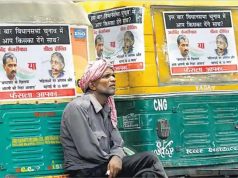By: B. Chandrasekaran (Economist, Planning Commission) & Vipin P. Veetil (Research Guide, CCS)
His articles do not figure in University of Delhi’s reading list and nearly none of the post-graduate students from India’s premiere economics research institute including the Delhi School of Economics, Indira Gandhi Institute of Research and Development, and Centre for Economic and Social Planning of Jawaharlal Nehru University, have ever heard his name.
B R Shenoy (1905 – 1978) was the first Indian economist to publish in a peer-revived economics journal – his articles appeared in the Quarterly Journal of Economics in 1931 and 1933. June 3 was Shenoy’s birth anniversary. Milton Friedman described him as a “great man who had the economic understanding to recognise the defects of central planning in India and what was even rarer, the courage to state his views openly and without equivocation”. Shenoy was the only Indian economist to write a Note of Dissent to the Nehru-Mahalanobis 2nd Five Year Plan; Prof. Peter Bauer thought that the Note “represented conspicuous moral courage”. We leave you with a few thoughtful lines from a true student of the economics science
“Under economic freedom, on the other hand, control over investment resources would be acquired by tens of millions of entrepreneurs competing in the open market, and economic power would be correspondingly diffused over the community as a whole. Financial success would be governed by efficiency, quality and price of the output, i.e., in proportion to what the individual adds to the national product. Under statism, however, financial success often rests overwhelmingly on contacts and “pull” in obtaining patronage, and not wholly on the use of talent to contribute to the stream of the national product. Statism is apt to bring into being a body of parasitical functionaries.”
Post Disclaimer
The opinions expressed in this essay are those of the authors. They do not purport to reflect the opinions or views of CCS.





